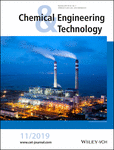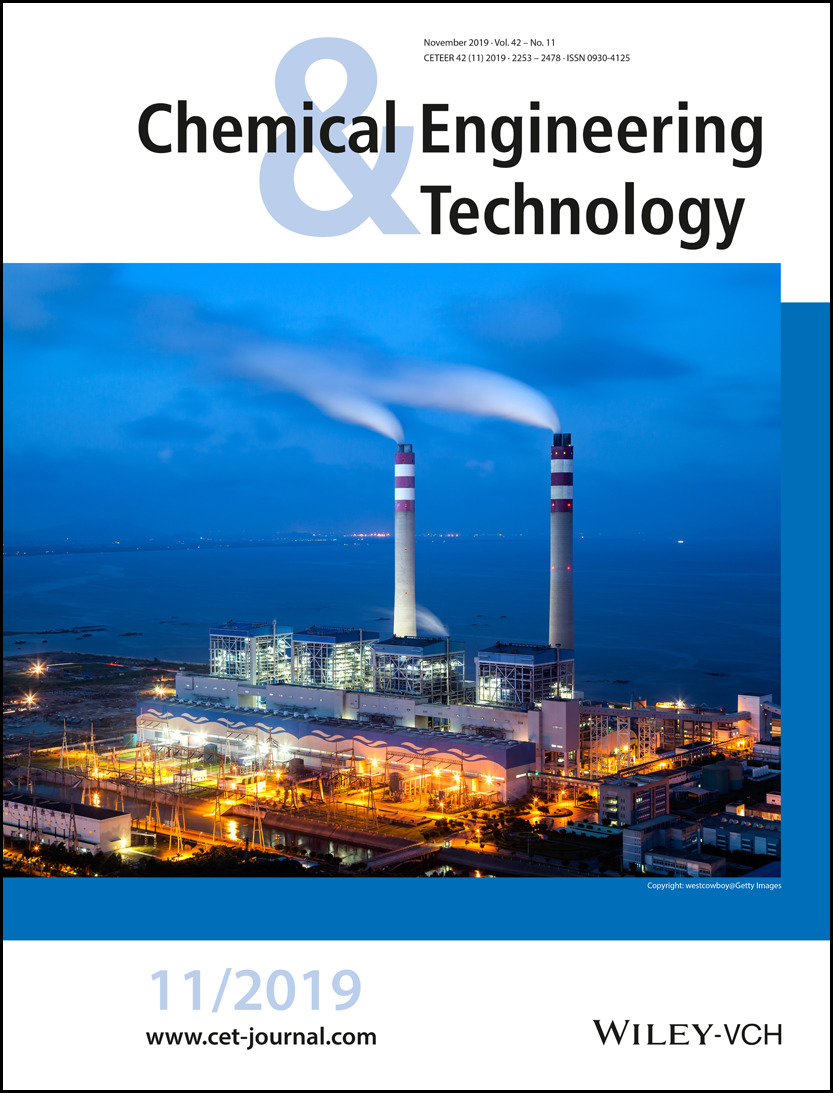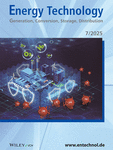Journal list menu
Export Citations
Download PDFs
Cover Picture
Cover Picture: Chem. Eng. Technol. 11/2019
- Page: 2253
- First Published: 23 October 2019
Editorial Board
Editorial Board: Chem. Eng. Technol. 11/2019
- Page: 2254
- First Published: 23 October 2019
Overview
Overview Contents: Chem. Eng. Technol. 11/2019
- Page: 2255
- First Published: 23 October 2019
Highlights
Reviews
Product Design and Engineering in Chemical Engineering: Past, Present State, and Future
- Pages: 2258-2274
- First Published: 17 June 2019
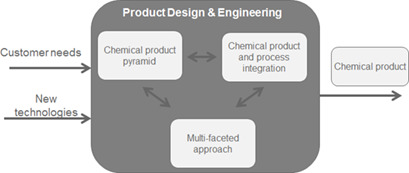
Product design and engineering (PDE) intends to define new and/or improved products based on customer needs and/or new technologies. A comprehensive discussion of PDE status and challenges of PDE as a building block for chemical engineering education, research, and practice is given and academic and industry perspectives are mapped. Additionally, an extensive literature review is provided.
Preparative Protein Crystallization
- Pages: 2275-2281
- First Published: 12 August 2019
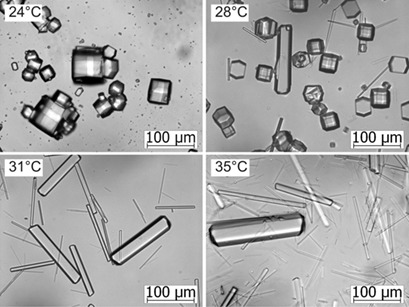
Crystalline proteins may be advantageous compared to the dissolved or amorphous form. Preparative protein crystallization involves the crystallization step itself and the subsequent solid-liquid separation step. Finding the right crystallization condition is pivotal for this process chain. The particular properties of proteins make the development of preparative protein crystallization challenging.
Orchestration Requirements for Modular Process Plants in Chemical and Pharmaceutical Industries
- Pages: 2282-2291
- First Published: 23 July 2019
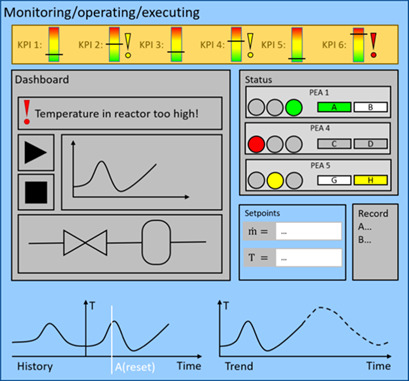
New aspects for control systems are described, which arise by the modularization of process plants. The basic steps, which have to be completed for the orchestration of a modular plant, are explained and an extensive list of functionalities to support them in a process orchestration layer (POL) is presented. A solid and well-coordinated POL ensures efficient operation of modular plants.
Research Articles
Effect of Silica Nanoparticles on the Performance of Polysulfone Membranes for Olefin-Paraffin Separation
- Pages: 2292-2301
- First Published: 21 June 2019
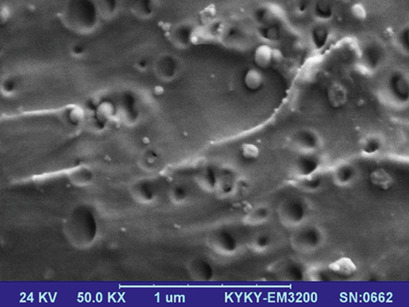
The effect of silica nanoparticles on improving olefin-paraffin separation of polysulfone membranes was investigated. Ethylene/ethane and propylene/propane were separated using polysulfone-silica nanocomposite membranes. The addition of silica nanoparticles to the polysulfone membrane increased the permeability, selectivity, and solubility coefficient, and reduced the diffusion coefficient.
Column Dust Scrubber Based on an Orifice Plate to Intensify Gas-Liquid Mixing
- Pages: 2302-2309
- First Published: 21 June 2019
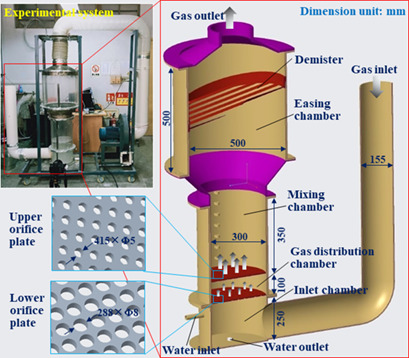
To meet the demand of small-volume, large-flow scrubbers, a column dust scrubber based on an orifice plate is developed for small and medium-sized enterprises. The orifice plate allows for an even distribution of the gas flow, generating a uniform and stable impact on the liquid phase. Dust removal via intensified gas-liquid mixing is achieved. A laboratory orifice plate scrubber model is installed.
Effect of Operating Parameters on Gas-Solid Hydrodynamics and Heat Transfer in a Spouted Bed
- Pages: 2310-2320
- First Published: 21 June 2019
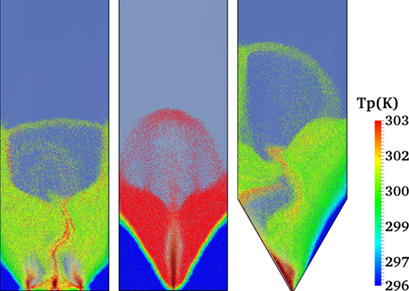
The spouted bed has advantages of excellent mixing performance and high efficiency of heat transfer. The effects of various operating parameters on the hydrodynamic and heat-transfer behavior are extensively investigated in a gas-solid two-phase spouted bed through a combined computational fluid dynamics and discrete element method approach.
Characterization of Bubble Shapes in Non-Newtonian Fluids by Parametric Equations
- Pages: 2321-2330
- First Published: 17 July 2019
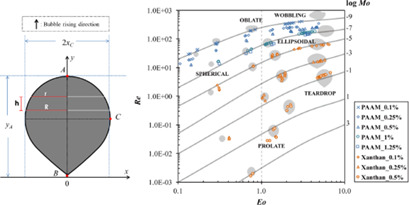
Characterization of bubble shapes in non-Newtonian fluids, from spherical/ellipsoidal to prolate/oblate-tear, was achieved based both on experiments with single air bubbles rising in stagnant fluids and on a new model containing the aspect ratio and two parameters. The cusp of the bubbles is related to the viscoelasticity and the shear-thinning level of the solutions.
Fixed-Bed Heat Storage – Mathematical Modeling Approaches
- Pages: 2331-2339
- First Published: 17 July 2019
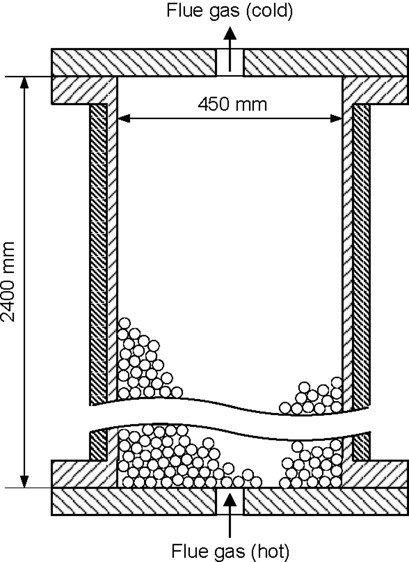
Heat storage systems play a key role in increasing the share of renewable heat in the energy system. Herein, a simulation model was developed to analyze fixed-bed thermal storage systems filled with an inert bulk material, which can operate at temperatures up to several hundred degrees Celsius. The model was tested by analyzing the dynamic behavior of a heat storage filled with stone fragments.
Hydrogen Production via Load-Matched Coupled Solar-Proton Exchange Membrane Electrolysis Using Aqueous Methanol
- Pages: 2340-2347
- First Published: 17 July 2019
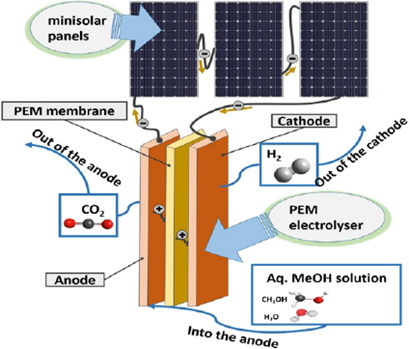
Application of a directly coupled load-matched solar-proton exchange membrane electrolysis using aqueous methanol instead of water for hydrogen production has been investigated and compared. The efficiency was subsequently employed in a process simulation to estimate costs in scaled-up systems. Aqueous methanol had a positive impact on hydrogen production rates and overall yields.
Deliquescence and Efflorescence of Hygroscopic Salt Particles in Dust Cakes on Surface Filters
- Pages: 2348-2357
- First Published: 17 July 2019
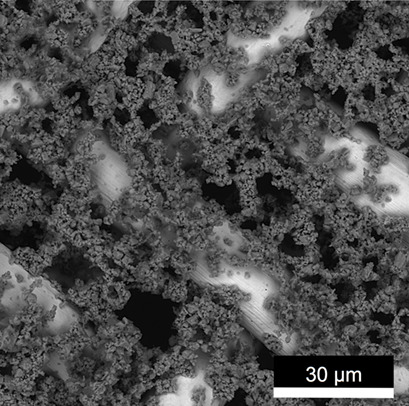
Deliquescence and efflorescence of salt particles in contact with non-hygroscopic particles are investigated. Environmental scanning electron microscopy pointed to a change to the adhesive bonds as well as a restructuring of the dust cake, which significantly influence the operating behavior of surface filters for dust separation.
Numerical Simulation of Acetone Stripping from Water in a Microchannel Device
- Pages: 2358-2364
- First Published: 23 July 2019
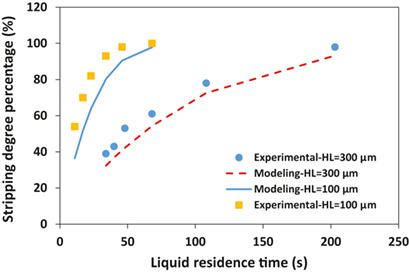
Separation costs are a key consideration of chemical plans. Process miniaturization is a common technique to improve mass transfer, which leads to an enhanced separation rate. A microstripper device for acetone separation from water has been modeled and validated. The model reveals that a decrease in liquid flow rate improves acetone stripping efficiency.
Design Impact on Airflow Patterns in Fluidization Units
- Pages: 2365-2375
- First Published: 30 July 2019
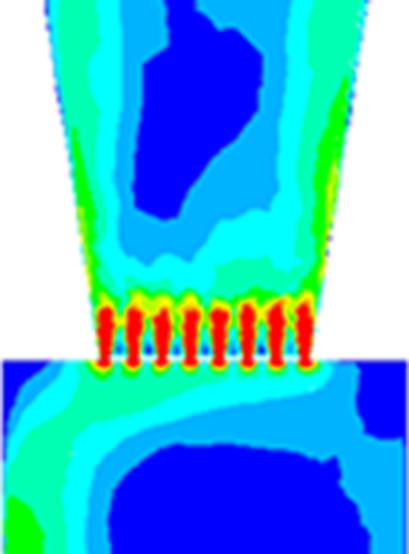
Experiments and computational fluid dynamics simulations were performed in a pilot-scale conical bed to study the impact of the gas inlet pipe, plenum, perforated plate, fluidization chamber, and air outlet pipe on the fluid dynamics behavior. Regarding the perforated-plate design, the distance of the peripheral orifices to the fluidization chamber wall was found to be a critical design parameter.
Measurement of Disodium 5'-Inosinate and Disodium 5'-Guanylate in Aqueous Ethanol by Attenuated Total Reflection Ultraviolet Method
- Pages: 2376-2385
- First Published: 30 July 2019
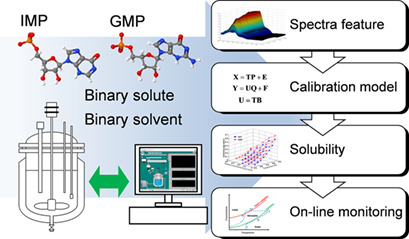
An online concentration monitoring method for a binary solute and binary solvent system using attenuated total reflection ultraviolet combined with a partial least squares model is introduced. Based on this method, the solubility of the experimental system was obtained and online concentration monitoring of the cooling crystallization process was performed with reasonable accuracy and precision.
Investigation of the Phase Equilibria of CO2/CH3OH/H2O and CO2/CH3OH/H2O/H2 Mixtures
- Pages: 2386-2392
- First Published: 30 July 2019
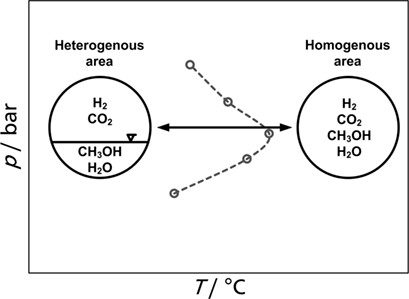
The production of methanol from H2 and CO2 is a promising technology for storing excess electrical energy. The equilibrium conversion of this reaction can be enhanced by an in situ condensation. The phase equilibria and densities of H2, CO2, methanol, and H2O mixtures are presented and correlated to the methanol synthesis. The influences of conversion, temperature, and pressure are discussed.
Optimal Control for Chemical Reactors with Distributed Parameters Using Genetic Algorithms
- Pages: 2393-2400
- First Published: 30 July 2019
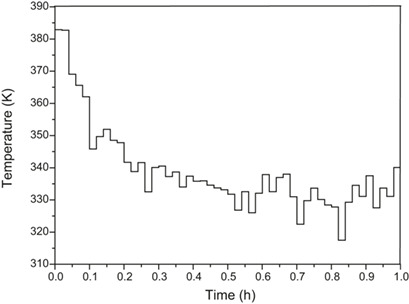
In four case studies, genetic algorithms (GA) are applied in the optimization of different chemical reactors. In all cases, the GA are superior in comparison to other methods such as maximum principle, simulated annealing, and particle swarm optimization. Optimal control can produce an economic advantage, e.g., by increasing the product selectivity and thus improving the use of raw materials.
Transient Effects during Dynamic Operation of a Wall-Cooled Fixed-Bed Reactor for CO2 Methanation
- Pages: 2401-2409
- First Published: 02 August 2019
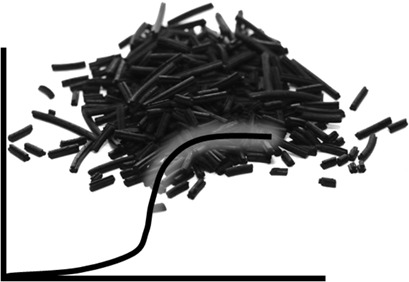
The dynamic behavior of a methanation reactor may be a critical feature in power-to-gas processes. Steady-state kinetics for CO2 methanation on a Ni catalyst were determined. Transient kinetic effects were observed in step change experiments for the reactants. A load change experiment in a wall-cooled fixed-bed reactor was modeled, showing distinct kinetic effects on the temperature in dynamic operation.
Adsorption of C6–C8 Aromatics over Ba-Exchanged Zeolite X at High Temperature
- Pages: 2410-2418
- First Published: 02 August 2019
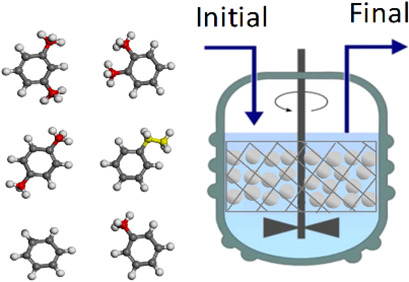
The adsorption of C6–C8 aromatics was investigated through batch experiments in the liquid phase, at higher temperatures than that of the industrial simulated moving-bed process. Reliable data were obtained from pseudo-single-component adsorption equilibrium isotherms for the further study of a simulated moving-bed reactor for the production of p-xylene.
Maximum Spreading of Urea Water Solution during Drop Impingement
- Pages: 2419-2427
- First Published: 02 August 2019
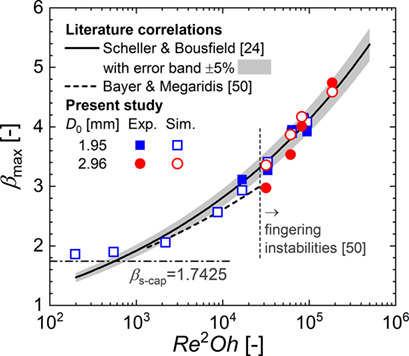
The impact of single urea water solution (UWS) drops is investigated experimentally and numerically. Results agree well for the advancing phase of spreading whereas for the receding phase differences occur. For the maximum spreading radius, an empirical correlation for other liquids is valid for millimeter-sized UWS drops as well but is unsuited for much smaller droplets in technical UWS sprays.
An Engineering Approach for Estimating the Formation of Nitric Oxide from Fuel-Nitrogen
- Pages: 2428-2433
- First Published: 12 August 2019
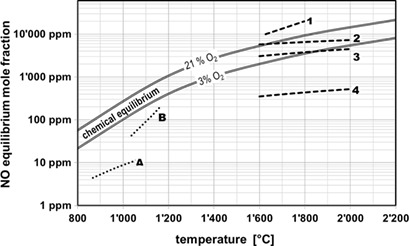
Explicit equations for estimating the conversion factor of fuel-nitrogen into nitric oxide are presented as approximate solutions to Fenimore's basic model for the formation of nitric oxide from fuel-nitrogen. The developed equations provide a valuable approach for engineering calculations and could serve as a bridge between combustion science and combustion engineering.
Fixed-Bed Adsorption of Allura Red Dye on Chitosan/Polyurethane Foam
- Pages: 2434-2442
- First Published: 12 August 2019
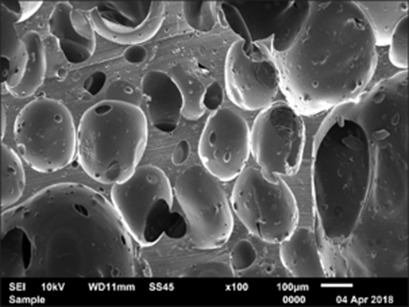
The technical feasibility of Allura Red adsorption on a polyurethane/chitosan composite foam for future scale-up objectives was evaluated and parameters for the optimum performance of the fixed bed were determined. Under ideal conditions, the experimental data from the fixed-bed column were fitted by empirical models for breakthrough curves, namely, Thomas, Yoon-Nelson, and BDST models.
Catalytic Oxidation of CO over Nanocrystalline La1–xCexNiO3 Perovskite-Type Oxides
- Pages: 2443-2449
- First Published: 16 August 2019
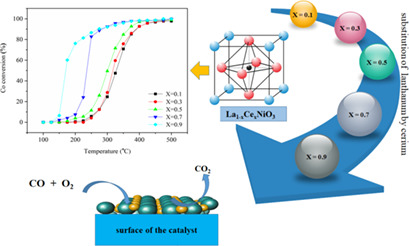
Perovskite catalysts are an alternative for the costly precious metal catalysts. The influence of Ce addition to the LaNiO3 structure in La1–xCexNiO3 catalysts on the textural properties and catalytic activity in CO oxidation was investigated. The substitution of La by Ce in the La1–xCexNiO3 perovskite had a significant effect on the catalytic activity and increased the CO conversion.
Pool Evaporation – Experimental Data Collection and Modeling
- Pages: 2450-2457
- First Published: 20 August 2019
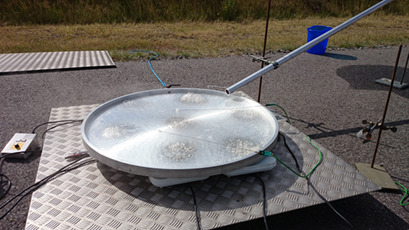
When handling hazardous liquids, the evaporating mass flow out of a liquid pool has to be considered for risk assessment. Experiments on pool evaporation with different substances, pool diameters, and at different vapor pressures and wind speeds have been performed and the data allowed the formulation of an evaporation model.
Enlargement of Submicron Gas-Borne Particles by Heterogeneous Condensation for Energy-Efficient Aerosol Separation
- Pages: 2458-2464
- First Published: 20 August 2019
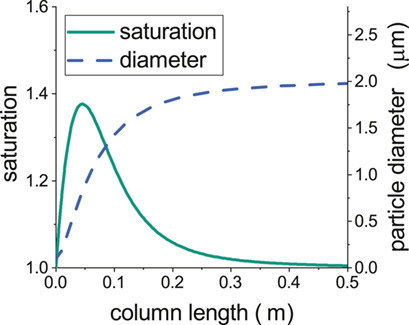
As preconditioning step for aerosol separation, fine dust particles can be enlarged in packed columns by condensation of water vapor on the particle surface. The simulation tool AerCoDe3.0 to predict the particle growth and the energy expenditure of the technique is presented. With these calculations, energetically optimized layouts for preconditioning devices are proposed.
Impact of Cellulose and Surfactants on Mass Transfer of Bubble Columns
- Pages: 2465-2475
- First Published: 26 August 2019
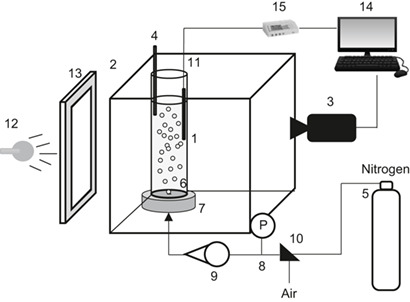
The simultaneous presence of surfactant compounds and microcrystalline cellulose is unavoidable in aerated tanks of wastewater treatment plants. To study the impact of their combination on the hydrodynamic behavior and liquid-side mass transfer coefficient in a bubble column is important to estimate the required oxygen supply to the aeration process.
Corrigendum
Kinetics and Heat Exchanger Design for Catalytic Ortho-Para Hydrogen Conversion during Liquefaction
- Page: 2476
- First Published: 23 October 2019
Overview
Overview Contents: Chemie Ingenieur Technik 11/2019
- Page: 2477
- First Published: 23 October 2019




